Календарно-тематический план
Английский язык 2 класс
Итого: 2 часа, в неделю 68 часов
| № п/п | Раздел/ Сквозные темы | Тема урока | Цель обучения | Кол-во часов | Сроки | Примечание |
| І четверть | ||||||
| 1 | All about me | Hello again | 2.1.2.1 recognise with considerable support an increasing range of common personal questions; 2.2.6.1 use short answers appropriately in short, basic exchanges and take turns when speaking with others in a limited range of short, basic exchanges; 2.3.2.1 identify, remember and sound out high-frequency sound and letter patterns; 2.4.5.1 write letters and familiar high frequency words when read aloud or spelt out for learners; 2.4.6.1 use with support upper and lower case letters accurately when writing familiar high frequency words | 1 |
|
|
| 2 | Hello again | 1 |
|
| ||
| 3 | I can... | 2.1.1.1 understand a range of short basic supported classroom instructions; 2.1.2.1 recognise with considerable support an increasing range of common personal uestions; 2.2.2.1 ask questions in order to satisfy basic needs and find information on familiar topics and classroom routines; 2.2.4.1 respond to basic supported questions giving personal and factual information; 2.2.8.1 give simple instructions for others to follow; 2.5.13.1 use can to talk about ability and to make requests and offers, use can/can’t to talk about permission | 1 |
|
| |
| 4 | I can... | 1 |
|
| ||
| 5 | I can... | 1 |
|
| ||
| 6 | My clothes and things | 2.1.1.1 understand a range of short basic supported classroom instructions; 2.2.1.1 make basic statements related to personal information, people and objects on familiar topics and classroom routines; 2.5.1.1 use singular nouns, plural nouns – including some common irregular plural forms in giving simple descriptions; 2.5.3.1 use common adjectives in descriptions and to talk about simple feelings | 1 |
|
| |
| 7 | My clothes and things | 1 |
|
| ||
| 8 | My clothes and things | 1 |
| UR1 | ||
| 9 | My family and friends | Friends’ names | 2.1.3.1 understand the main points of short, slow and carefully articulated talk on routine and familiar topics features such as colour and number; 2.3.1.1 read and spell out words for others; 2.4.2.1 write letters and familiar high frequency words when read aloud or spelt | 1 |
|
|
| 10 | Friends’ names | 1 |
|
| ||
| 11 | Friends’ names | 1 |
|
| ||
| 12 | Helping hands | 2.1.1.1 understand a range of short basic supported classroom instructions; 2.2.3.1 use a limited range of basic words, phrases and short sentences to describe objects, activities and classroom routines; 2.2.5.1 begin to articulate clearly the difference between various sounds; 2.2.6.1 use short answers appropriately in short, basic exchanges and take turns when speaking with others in a limited range of short, basic exchanges; 2.3.1.1 read and spell out words for others; 2.4.1.1 write with support short responses at phrase level to questions and other prompts; 2.5.6.1 use demonstrative pronouns this, these, that, those to make and respond to requests for information; 2.5.13.1 use can to talk about ability and to make requests and offers, use can/can’t to talk about permission | 1 |
|
| |
| 13 | Helping hands | 1 |
|
| ||
| 14 | Helping hands | 1 |
|
| ||
| 15 | People I know | 2.1.3.1 understand the main points of short, slow and carefully articulated talk on routine and familiar topics features such as colour and number; 2.2.1.1 make basic statements related to personal information, people and objects on familiar topics and classroom routines; 2.2.3.1 use a limited range of basic words, phrases and short sentences to describe objects, activities and classroom routines; 2.5.3.1 use common adjectives in descriptions and to talk about simple feelings; 2.5.13.1 use can to talk about ability and to make requests and offers, use can/can’t to talk about permission | 1 |
| UR2 | |
| 16 | Summative Assessment 1 | 1 |
|
| ||
| ІІ четверть | ||||||
| 17 | My school | Counting and Measuring | 2.1.1.1 understand a range of short basic supported classroom instructions; 2.1.3.1 understand the main points of short, slow and carefully articulated talk on routine and familiar topics features such as colour and number; 2.1.5.1 identify missing phonemes in incomplete words; 2.2.4.1 respond to basic supported questions giving personal and factual information; 2.3.4.1 begin to use with support a simple picture dictionary; 2.5.2.1 use cardinal numbers 1 – 50 to count; 2.5.11.1 use have got + noun to describe and ask about possessions | 1 |
|
|
| 18 | Counting and Measuring | 1 |
|
| ||
| 19 | Around school | 2.1.4.1 recognise with support short basic questions relating to features such as colour and number; 2.1.5.1 identify missing phonemes in incomplete words; 2.2.3.1 use a limited range of basic words, phrases and short sentences to describe objects, activities and classroom routines; 2.4.3.1 write short phrases to identify people, places and objects; 2.5.14.1 use basic prepositions of location and position: at, behind, between, in, in front of, near, next to, on, to describe where people and things are, use prepositions of time: on, in, at to talk about days and times | 1 |
|
| |
| 20 | Around school | 1 |
|
| ||
| 21 | School days | 2.1.2.1 recognise with considerable support an increasing range of common personal questions; 2.1.3.1 understand the main points of short, slow and carefully articulated talk on routine and familiar topics features such as colour and number; 2.2.3.1 use a limited range of basic words, phrases and short sentences to describe objects, activities and classroom routines; 2.3.2.1 identify, remember and sound out high-frequency sound and letter patterns; 2.4.7.1 spell some familiar high-frequency words accurately during guided writing activities | 1 |
|
| |
| 22 | School days | 1 |
|
| ||
| 23 | Class Photos | 2.2.2.1 ask questions in order to satisfy basic needs and find information on familiar topics and classroom routines; 2.2.4.1 respond to basic supported questions giving personal and factual information; 2.3.2.1 identify, remember and sound out high-frequency sound and letter patterns; 2.5.7.1 use personal subject and object pronouns to describe people and things | 1 |
|
| |
| 24 | Class Photos | 1 |
| UR1 | ||
| 25 | The world around us | Different Plases | 2.1.3.1 understand the main points of short, slow and carefully articulated talk on routine and familiar topics features such as colour and number; 2.1.5.1 identify missing phonemes in incomplete words; 2.2.3.1 use a limited range of basic words, phrases and short sentences to describe objects, activities and classroom routines; 2.2.4.1 respond to basic supported questions giving personal and factual information; 2.5.5.1 use interrogative pronouns including which, what, where, whose to ask who people are and what they are doing; 2.5.12.1 use basic adverbs of place here/there to say where things | 1 |
|
|
| 26 | Different Plases | 1 |
|
| ||
| 27 | Reading Signs | 2.2.1.1 make basic statements related to personal information, people and objects on familiar topics and classroom routines; 2.2.2.1 ask questions in order to satisfy basic needs and find information on familiar topics and classroom routines; 2.2.7.1 place stress correctly on familiar polysyllabic words 2.3.3.1 read and follow with considerable support simple, words, phrases and sentences on familiar topics; 2.3.5.1 understand the main points of simple sentences on familiar topics by using contextual clues; 2.5.8.1 use simple imperative forms [positive and negative] for basic commands and instructions; 2.5.13.1 use can to talk about ability and to make requests and offers, use can/can’t to talk about permission | 1 |
|
| |
| 28 | Reading Signs | 1 |
|
| ||
| 29 | Where’s it from? | 2.1.3.1 understand the main points of short, slow and carefully articulated talk on routine and familiar topics features such as colour and number; 2.1.5.1 identify missing phonemes in incomplete words; 2.2.3.1 use a limited range of basic words, phrases and short sentences to describe objects, activities and classroom routines; 2.3.3.1 read and follow with considerable support simple, words, phrases and sentences on familiar topics | 1 |
|
| |
| 30 | Where’s it from? | 1 |
|
| ||
| 31 | Days Out | 2.1.5.1 identify missing phonemes in incomplete words; 2.2.2.1 ask questions in order to satisfy basic needs and find information on familiar topics and classroom routines; 2.3.3.1 read and follow with considerable support simple, words, phrases and sentences on familiar topics; 2.5.4.1 use determiners a, an, the, some, any, this, these, that, those to identify things | 1 |
| UR2 | |
| 32 | Summative Assessment 2 | 1 |
|
| ||
| ІІІ четверть | ||||||
| 33 | Health and body | Our body | 2.2.3.1 use a limited range of basic words, phrases and short sentences to describe objects, activities and classroom routines; 2.3.1.1 read and spell out words for others; 2.3.6.1 understand with considerable and particularly visual support, some specific information in short, simple texts on familiar topics; 2.5.6.1 use demonstrative pronouns this, these, that, those to make and respond to requests for information | 1 |
|
|
| 34 | Our body | 1 |
|
| ||
| 35 | Let’s measure | 2.1.1.1 understand a range of short basic supported classroom instructions; 2.1.4.1 recognise with support short basic questions relating to features such as colour and number; 2.5.2.1 use cardinal numbers 1 – 50 to count | 1 |
|
| |
| 36 | Let’s measure | 1 |
|
| ||
| 37 | Hats and Bats | 2.1.4.1 recognise with support short basic questions relating to features such as colour and number; 2.2.8.1 give simple instructions for others to follow give simple instructions for others to follow; 2.3.1.1 read and spell out words for others; 2.3.4.1 begin to use with support a simple picture dictionary | 1 |
|
| |
| 38 | Hats and Bats | 1 |
|
| ||
| 39 | Reading time | 2.1.5.1 identify missing phonemes in incomplete words; 2.2.4.1 respond to basic supported questions giving personal and factual information; 2.3.3.1 read and follow with considerable support simple, words, phrases and sentences on familiar topics; 2.4.3.1 write short phrases to identify people, places and objects; 2.5.13.1 use can to talk about ability and to make requests and offers, use can/can’t to talk about permission | 1 |
|
| |
| 40 | Reading time | 1 |
|
| ||
| 41 | Reading time | 1 |
| UR1 | ||
| 42 | Traditions and customs | Special Days | 2.1.1.1 understand a range of short basic supported classroom instructions; 2.2.4.1 respond to basic supported questions giving personal and factual information; 2.5.8.1 use simple imperative forms [positive and negative] for basic commands and instructions; 2.5.9.1 use common present simple forms [positive, negative, question] and ontractions to talk about what you want and like and habits and facts | 1 |
|
|
| 43 | Special Days | 1 |
|
| ||
| 44 | Special Days | 1 |
|
| ||
| 45 | Home cooking | 2.1.7.1 use contextual clues to predict content in short, supported talk on routine and familiar topics; 2.1.9.1 recognise the spoken form of familiar words and expressions; 2.2.3.1 use a limited range of basic words, phrases and short sentences to describe objects, activities and classroom routines; 2.3.1.1 read and spell out words for others | 1 |
|
| |
| 46 | Home cooking | 1 |
|
| ||
| 47 | Home cooking | 1 |
|
| ||
| 48 | Home cooking | 1 |
|
| ||
| 49 | What’s it for? | 2.1.3.1 understand the main points of short, slow and carefully articulated talk on routine and familiar topics features such as colour and number; 2.1.6.1 understand some specific information in short, slow, carefully articulated talk on routine and familiar topics; 2.2.4.1 respond to basic supported questions giving personal and factual information; 2.4.7.1 spell some familiar high-frequency words accurately during guided writing activities; 2.4.8.1 include a full stop when writing very high-frequency short sentences in guided writing activity | 1 |
|
| |
| 50 | What’s it for? | 1 |
|
| ||
| 51 | What’s it for? | 1 |
| UR2 | ||
| 52 | Summative Assessment 3 | 1 |
|
| ||
| ІV четверть | ||||||
| 53 |
The natural environment | The weather | 2.1.8.1 understand short narratives spoken slowly and distinctly on routine and familiar topics; 2.2.3.1 use a limited range of basic words, phrases and short sentences to describe objects, activities and classroom routines; 2.5.3.1 use common adjectives in descriptions and to talk about simple feelings | 1 |
|
|
| 54 | The weather | 1 |
|
| ||
| 55 | Changing seasons | 2.1.4.1 recognise with support short basic questions relating to features such as colour and number; 2.2.7.1 place stress correctly on familiar polysyllabic words; 2.3.3.1 read and follow with considerable support simple, words, phrases and sentences on familiar topics; 2.3.6.1 understand with considerable and particularly visual support, some specific information in short, simple texts on familiar topics; 2.5.9.1 use common present simple forms [positive, negative, question] and contractions to talk about what you want and like and habits and facts | 1 |
|
| |
| 56 | Changing seasons | 1 |
|
| ||
| 57 | What can animals do? | 2.1.4.1 recognise with support short basic questions relating to features such as colour and number; 2.5.10.1 use common present continuous forms [positive, negative, question]; 2.5.13.1 use can to talk about ability and to make requests and offers, use can/can’t to talk about permission; 2.5.16.1 use conjunctions and, or, but to link words and phrases; 2.5.17.1 use me, too to give short answers | 1 |
|
| |
| 58 | What can animals do? | 1 |
|
| ||
| 59 | Sea Adventures | 2.1.3.1 understand the main points of short, slow and carefully articulated talk on routine and familiar topics features such as colour and number; 2.2.3.1 use a limited range of basic words, phrases and short sentences to describe objects, activities and classroom routines; 2.3.1.1 read and spell out words for others; 2.4.5.1 write letters and familiar high frequency words when read aloud or spelt out for learners 2.3.1.1 read and spell out words for others; 2.4.5.1 write letters and familiar high frequency words when read aloud or spelt out for learners | 1 |
|
| |
| 60 | Sea Adventures | 1 |
| UR1 | ||
| 61 | Travel | A to B | 2.2.3.1 use a limited range of basic words, phrases and short sentences to describe objects, activities and classroom routines; 2.5.9.1 use common present simple forms [positive, negative, question] and contractions to talk about what you want and like and habits and facts; 2.5.14.1 use basic prepositions of location and position: at, behind, between, in, in front of, near, next to, on, to to describe where people and things are, use prepositions of time: on, in, at to talk about days and times | 1 |
|
|
| 62 | A to B | 1 |
|
| ||
| 63 | Types of vehicle | 2.2.4.1 respond to basic supported questions giving personal and factual information; 2.3.3.1 read and follow with considerable support simple, words, phrases and sentences on familiar topics; 2.5.13.1 use can to talk about ability and to make requests and offers, use can/can’t to talk about permission | 1 |
|
| |
| 64 | Types of vehicle | 1 |
|
| ||
| 65 | My plane | 2.2.1.1 make basic statements related to personal information, people and objects on familiar topics and classroom routines; 2.5.11.1 use have got + noun to describe and ask about possessions | 1 |
|
| |
| 66 | Bike Story | 2.1.8.1 understand short narratives spoken slowly and distinctly on routine and familiar topics; 2.5.10.1 use common present continuous forms [positive, negative, question] | 1 |
|
| |
| 67 | Altogether Now | 2.2.4.1 respond to basic supported questions giving personal and factual information; 2.3.3.1 read and follow with considerable support simple, words, phrases and sentences on familiar topics; 2.4.8.1 include a full stop when writing very high-frequency short sentences in guided writing activity | 1 |
| UR2 | |
| 68 | Summative Assessment 4 | 1 |
| SA4 | ||

 Получите свидетельство
Получите свидетельство Вход
Вход




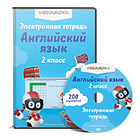
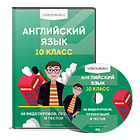
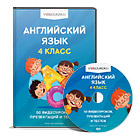
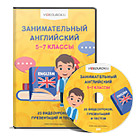
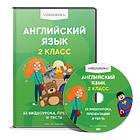
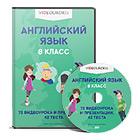
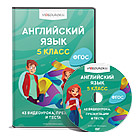
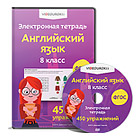
 КТП 2 класс английский язык (25 KB)
КТП 2 класс английский язык (25 KB)
 0
0 1197
1197 67
67 Нравится
0
Нравится
0



